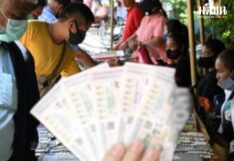| ผู้เขียน | Wirot Poonsuwan |
|---|
The long-awaited September 10, 2018 Announcement of the Ministry of Finance governing peer-to-peer digital financing has not been received well by international service providers of electronic and computer networks offering matching financial services between lenders and borrowers, partly due to the low 15% p.a. effective maximum interest rate fixed by the regulation.
Nevertheless, the passing of a new legislation by the National Legislative Assembly on Thursday, January 31, 2019 that is aimed at modernizing a typical type of microfinancing and increasing access to non-bank alternative credits for the masses might serve as a game changer, prompting many digital platform operators to take a serious look at launching their blockchain fintech service now and wait no more.
36% interest, not high enough?
People could say they are greedy, but marred by their actual experience of crippling high rates of P2P bad-debt from overseas, something to be expected when you lend clean to the population at large with no loan security, these platform operators had hoped that the effective interest rate permitted by the P2P regulation would be promising. They anticipated far beyond 36% p.a. maximum rate permissible for Nano financing and Pico financing to make their models of business feasible, having deducted write-offs.
Indeed, some of these financial technology companies have considered adapting their blockchain to lending direct to citizens, instead of acting as matching middlemen in P2P, if return on investment is attractive, of course. Financially, they are capable of lending small amounts, hundreds of dollars, to low-income earners by complying with regulatory requirements and applying for MOF licenses for Nano financing (lending to very small individual borrowers—“nano” literally means one billionth) and for Pico financing (even lower-income individuals—mathematically “pico” means one trillionth—so extremely tiny).
No direct restriction on foreign participation in Nano- and Pico-financing
P2P service providers are required to be 75% owned by Thai nationals.
Nano- and Pico-financing regulations, on the contrary, leave the door open for 100% foreign-owned lenders in the belief that good capital resources for the local population could come from abroad.
However, lending is financial services that are generally restricted to foreigners under the foreign business law administered by the Department of Business Development. Either you obtain a foreign business license from the DBD or enter into a joint venture with your Thai partners first before you move on to the MOF for any financing license.
After let’s say a Pico-financing license is granted, you as a fintech company can then lend 50,000 baht (USD 1,600) to Pico provincial individual borrowers in large cities, such as Bangkok, Phuket or Chiangmai and persuade authorities to allow you to use technology as the platform; as always the authorities are open to innovations if convinced that they will benefit the consumers.
P2P tech companies dissuaded by 15% interest
Unbelievable but true, ridden by high bad debts in countries they operate, these tech specialists were turned off by the “low” effective interest rate of 36%. They simply were not interested, but quietly were optimistic that when a P2P regulation came into place, the lawful interest rate would be lifted substantially. Everyone hinged their hope on P2P.
Then came the MOF September 2018 P2P regulation that dashed their hopes. Disappointingly, this supposedly rescuing P2P rule turned out to be worse than the Nano-financing and Pico-financing rules. The peer-to-peer announcement limits the effective interest rate at 15% p.a.!
The ceiling is an archaic general maximum rate specified by the Civil and Commercial Code, unchanged for generations.
It’s fair to say P2P lending in Thailand does not fly because of this old-fashioned low interest rate. The country has not been able to strike a good balance between protecting public consumers against usurious interest and attracting fintech investors… until January 2019, albeit coincidentally.
New 2019 microfinancing law as a white knight
With the general election slated for March, on January 31, 2019 the NLA efficiently passed a brand-new microcredit law to protect farmers and low-income homeowners from losing their farmland and homes to loan sharks who traditionally demand that the borrowers’ agricultural land or residential land be sold to them with a right of redemption. These lenders abhor complicated mortgages.
Under a land sale with a right of redemption, the lender would lend to the borrower at a low 30% of the appraised value of the land as fixed by the Treasury Department, leaving a huge margin of equity. In return for the lender disbursing the loan to the borrower at the provincial land office, the borrower registers a “land sale with a right redemption” in favor of the lender.
According to this redemption land sale, the ownership in the land transfers from the borrower to the lender immediately upon registration. The lender’s real-estate ownership remains until the fixed redemption date, which is the repayment date, when the land ownership transfers back to the borrower if the borrower redeems the land—by paying the lender the redemption price consisting of the loan principal and interest.
If the borrower fails to redeem the land when due, at that point the land automatically belongs to the lender for good, without any further procedure of enforcement. The ease of the lender acquiring the permanent land ownership is what renders redemption land-sales far more popular than mortgages as loan security in non-bank alternative financing.
Redemption land-sale as great loan security
Banks, for example, are not permitted to demand a redemption land-sale as collateral; they can only have land mortgages. Banks have no choice but to endure the pain of enforcing the mortgages through the hierarchical court system. And commercial banks will not deal with farmers and small business owners with high risk of default.
Back to understanding more about redemption land-sales. In reality, an unscrupulous lender would impose an astronomical interest on the loan in such a way that the poor farmer/borrower cannot afford to redeem the land on the redemption date at the redemption price and is forced to forfeit the real property ownership. There have been thousands of cases of litigation a year, some of which see lenders fraudulently disappeared on the redemption date to avoid being paid and to refuse the borrowers an opportunity to redeem their land.
The ultimate purpose of the lender is to own the borrower’s land at cheap price and resell it for a handsome profit or add it up to his treasure hoard for next generations—a large number of local influential landlords inherit their expansive tracts of land from their ancestors through redemption land sales.
This type of lenders does not care about bad debt, debt collection or even repayment in cash. Land is their goal.
The new redemption land-sale law pulls out all the stops in helping the masses through a long series of strong measures against exploitation by lenders. Just the same as the P2P regulation, it puts a 15% interest rate limit on redemption land-sale loans.
Merge P2P with redemption land-sales
Despite strong medicine from the new law, there will always be folks who cannot afford even a 15% interest, considered very high compared to banks’ loans. What farmers and small business owners will be able to earn a profit of 15% p.a. on their investment to smoothly redeem their land in a few years? The redemption land-sale will thus continue to be a highly popular way of private individual and corporate lenders providing finance to the masses—to fill in chasm left by banks.
And it’s even forecast that the certainty and openness offered by the new law in respect of creditors’ rights will even draw more lenders to the alternative loan markets. Most of all, microcredit secured by redemption land-sales is largely unregulated; it’s laisse faire for nearly everyone. Unlike P2P, Nano- and Pico-financing, redemption and-sales are free-market financial products and will remain free for a long time to come as the state realizes the importance of access by unimportant folks to non-bank funding.
This is a great opportunity for P2P platform operators to come in to help. The low 15% effective interest will be overcome by the lenders’ desire to own land and bad debt will not be a problem. There are hundreds of thousands of alternative lenders and micro borrowers across the country who are familiar with and rely on redemption land-sales and want to be matched.
It’s high time you started launching your P2P platform now—the dry-run period by the government can take some time. Go to the Bank of Thailand and ask to have them test your system in the central bank’s Regulatory Sandbox. When the BOT is satisfied with your network, they will apply for an MOF P2P license for you.
Wirot Poonsuwan is Senior Counsel and Head of Special Projects at Bangkok law firm Blumenthal Richter & Sumet and can be contacted at [email protected].










